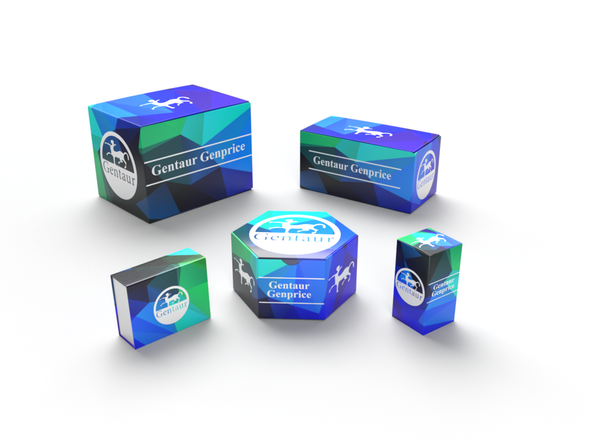Description
GNGT2 Antibody | 27-014 | Gentaur UK, US & Europe Distribution
Host: Rabbit
Reactivity: Human
Homology: N/A
Immunogen: Antibody produced in rabbits immunized with a synthetic peptide corresponding a region of human GNGT2.
Research Area: Signal Transduction
Tested Application: E, WB
Application: GNGT2 antibody can be used for detection of GNGT2 by ELISA at 1:312500. GNGT2 antibody can be used for detection of GNGT2 by western blot at 1 μg/mL, and HRP conjugated secondary antibody should be diluted 1:50, 000 - 100, 000.
Specificiy: N/A
Positive Control 1: 293T Cell Lysate
Positive Control 2: N/A
Positive Control 3: N/A
Positive Control 4: N/A
Positive Control 5: N/A
Positive Control 6: N/A
Molecular Weight: 8 kDa
Validation: N/A
Isoform: N/A
Purification: Antibody is purified by peptide affinity chromatography method.
Clonality: Polyclonal
Clone: N/A
Isotype: N/A
Conjugate: Unconjugated
Physical State: Liquid
Buffer: Purified antibody supplied in 1x PBS buffer with 0.09% (w/v) sodium azide and 2% sucrose.
Concentration: batch dependent
Storage Condition: For short periods of storage (days) store at 4˚C. For longer periods of storage, store GNGT2 antibody at -20˚C. As with any antibody avoid repeat freeze-thaw cycles.
Alternate Name: GNGT2, G-GAMMA-8, G-GAMMA-C, GNG8, GNG9, GNGT8
User Note: Optimal dilutions for each application to be determined by the researcher.
BACKGROUND: Phototransduction in rod and cone photoreceptors is regulated by groups of signaling proteins. GNGT2 is thought to play a crucial role in cone phototransduction. It belongs to the G protein gamma family and localized specifically in cones.Phototransduction in rod and cone photoreceptors is regulated by groups of signaling proteins. The encoded protein is thought to play a crucial role in cone phototransduction. It belongs to the G protein gamma family and localized specifically in cones. There is evidence for use of multiple polyadenylation sites by this gene.






